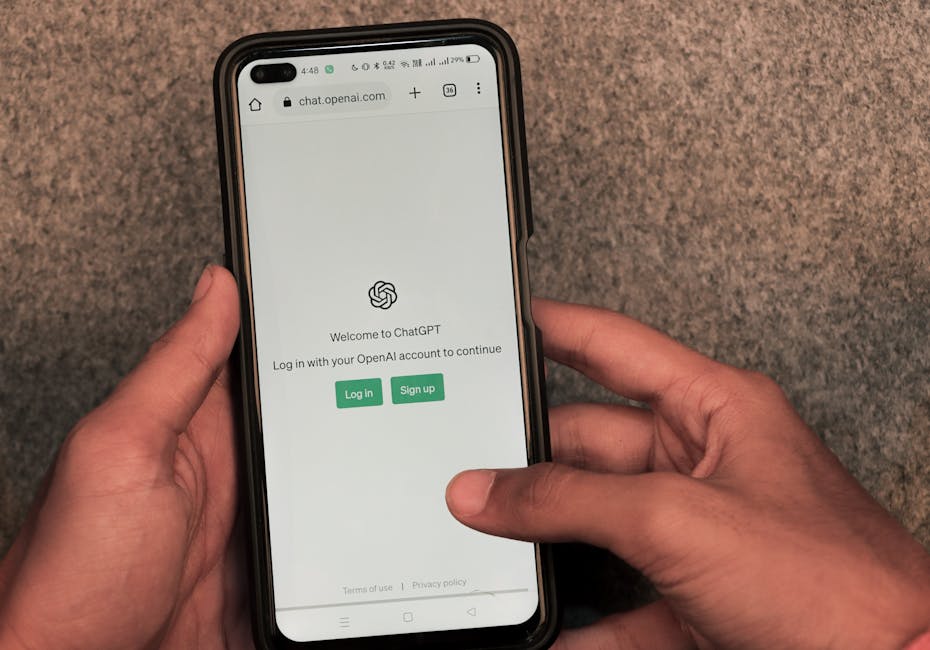 html
html
Simple Ecommerce Scraping for Everyday Needs
Why Scrape Ecommerce Data?
Ever wonder how some businesses seem to have an almost unfair advantage? A lot of the time, it comes down to information. Access to timely, accurate data is crucial in today's hyper-competitive ecommerce landscape. We're talking about things like:
- Price Monitoring: Knowing exactly what your competitors are charging in real-time. Are they running flash sales? Offering discounts you need to match?
- Product Availability: Tracking competitor inventory to identify potential supply chain issues or market gaps. If a popular item is consistently out of stock somewhere else, it's an opportunity for you!
- Market Research Data: Understanding overall market trends. What products are becoming more popular? What features are customers responding to?
- Competitive Intelligence: Analyzing your competitors' product catalogs, marketing strategies, and customer reviews.
Essentially, ecommerce web scraping helps you transform the vast sea of online data into actionable ecommerce insights. You can improve inventory management, optimize your pricing strategies, and make more informed business decisions.
What Can You Scrape? (And What Can You *Do* With It?)
The possibilities are almost endless! Here are just a few examples of data you can effectively scrape data without coding using tools like JustMetrically, or manually with a playwright scraper if you're technically inclined.
- Product Prices: Track price changes over time to identify trends and optimize your own pricing.
- Product Descriptions: Analyze competitor product descriptions to identify keywords and marketing strategies.
- Product Images: Gather images for competitor analysis or training AI models.
- Customer Reviews: Understand what customers like and dislike about competitor products. This invaluable feedback can help you improve your own products and services.
- Product Availability (Stock Levels): Monitor stock levels to identify potential supply chain disruptions or opportunities.
- Product Specifications: Gather detailed product information like dimensions, materials, and features for comparison purposes.
- Category Listings: Map out competitor product categories and structures.
- Deals & Promotions: Be immediately alerted to special offers, discounts, and bundled deals.
What can you *do* with all this scraped data? Here are a few ideas:
- Automated Price Adjustments: Dynamically adjust your prices based on competitor pricing (often done with APIs or scripts).
- Inventory Optimization: Predict demand and optimize inventory levels based on competitor availability.
- Product Development: Identify unmet customer needs and develop new products or features.
- Marketing Campaign Optimization: Tailor your marketing campaigns based on competitor strategies and customer reviews.
- Identify emerging trends: Spot new product categories or features gaining popularity.
- Real Estate Data Scraping for market intelligence: Keep track of housing prices and market trends.
- Twitter Data Scraper for sentiment analysis: Understand how people are talking about your brand or competitors.
Ethical Web Scraping: Play by the Rules!
Before you dive headfirst into scraping, it's absolutely essential to understand the legal and ethical considerations. Is web scraping legal? The answer is: it depends. Here's a quick rundown:
- Robots.txt: Always, *always* check the website's
robots.txtfile (e.g.,www.example.com/robots.txt). This file tells web crawlers (including your scraper) which parts of the site they are allowed to access and which they should avoid. Respect these rules! - Terms of Service (ToS): Read the website's Terms of Service. Many websites explicitly prohibit web scraping. Violating the ToS can have legal consequences.
- Respect Rate Limits: Don't bombard the website with requests. This can overload their servers and get your IP address blocked. Implement delays between requests. Think of it like being a polite guest – don't hog all the food!
- Avoid Scraping Personal Data: Be careful when scraping personal data. Privacy regulations (like GDPR and CCPA) place strict limits on the collection and use of personal information.
- Identify Yourself: Include a User-Agent header in your requests that identifies your scraper. This allows website owners to contact you if there are any issues.
In short: Be respectful, be transparent, and follow the rules. If you're unsure about the legality of scraping a particular website, it's always best to consult with a legal professional.
A Simple Ecommerce Scraping Example with Playwright
Let's get our hands dirty! Here's a simple Python example using Playwright to scrape the title and price of a product from a fictional ecommerce site (replace "https://www.example.com/product" with an actual product URL).
First, make sure you have Playwright installed. You can install it using pip:
pip install playwright
playwright installNow, here's the Python code:
from playwright.sync_api import sync_playwright
def scrape_product_details(url):
with sync_playwright() as p:
browser = p.chromium.launch(headless=True) # Run in headless mode (no browser window)
page = browser.new_page()
page.goto(url)
# Adjust these selectors to match the actual website's HTML structure
title_selector = "h1.product-title"
price_selector = ".product-price"
# Wait for the elements to load
page.wait_for_selector(title_selector)
page.wait_for_selector(price_selector)
title = page.inner_text(title_selector)
price = page.inner_text(price_selector)
browser.close()
return {"title": title, "price": price}
if __name__ == "__main__":
product_url = "https://www.example.com/product" # Replace with a real URL!
product_data = scrape_product_details(product_url)
if product_data:
print(f"Product Title: {product_data['title']}")
print(f"Product Price: {product_data['price']}")
else:
print("Could not retrieve product details.")
Explanation:
- Import Playwright: Imports the necessary modules from the Playwright library.
- Launch Browser: Launches a Chromium browser in headless browser mode (meaning it runs in the background without a visible window).
- Create Page: Creates a new page (tab) in the browser.
- Navigate to URL: Navigates the page to the specified product URL.
- Define Selectors: Defines CSS selectors for the product title and price elements. This is the part you'll need to adjust based on the specific website you're scraping. Use your browser's developer tools (right-click -> Inspect) to identify the correct selectors.
- Wait for Selectors: Waits for the elements matching the selectors to be present on the page. This ensures that the page has fully loaded before attempting to extract the data.
- Extract Data: Extracts the text content of the title and price elements using
page.inner_text(). - Close Browser: Closes the browser.
- Print Results: Prints the extracted product title and price.
Important Notes:
- Website Structure: This code assumes a specific HTML structure. You'll need to adapt the CSS selectors (
title_selectorandprice_selector) to match the structure of the website you're scraping. - Error Handling: This is a very basic example and doesn't include error handling. In a real-world application, you would want to add error handling to catch exceptions (e.g., if the element is not found) and handle them gracefully.
- Dynamic Content: Many ecommerce sites use JavaScript to dynamically load content. Playwright is excellent at handling dynamic content, as it waits for elements to appear on the page.
- Rate Limiting: Remember to implement rate limiting to avoid overloading the website's servers. You can use the
time.sleep()function to add delays between requests.
Scaling Your Scraping Efforts
While the example above is a good starting point, it's not very scalable. For more complex scraping projects, you'll want to consider:
- Concurrency: Use multiple threads or processes to scrape multiple pages simultaneously.
- Proxies: Rotate your IP address to avoid getting blocked.
- Data Storage: Store the scraped data in a database or other structured format for easy analysis.
- Scheduling: Schedule your scraper to run automatically at regular intervals.
- Api Scraping: Some websites offer APIs (Application Programming Interfaces) that provide a more structured and reliable way to access data. If an API is available, it's generally preferable to scraping.
For large-scale scraping projects, you might also consider using a web scraping service like JustMetrically.
Alternatives to Coding: No-Code Scraping
If you're not comfortable with Python or programming in general, don't worry! There are many data scraping services and no-code tools that allow you to scrape data without coding. These tools typically provide a visual interface for selecting the data you want to extract. JustMetrically allows you to do exactly this.
These no-code tools are often easier to use for simple scraping tasks, but they may not be as flexible or powerful as a custom-built scraper. They also might be limited in how much data analysis you can perform without exporting to another tool. But, for many use-cases, they are perfect.
Checklist: Getting Started with Ecommerce Scraping
Ready to dive in? Here's a quick checklist to get you started:
- Define Your Goals: What data do you need? What questions are you trying to answer?
- Choose Your Tools: Will you use a playwright scraper, a no-code tool, or a web scraping service?
- Identify Your Target Websites: Which websites contain the data you need?
- Read the Robots.txt and ToS: Understand the website's rules and restrictions.
- Start Small: Begin with a simple scraping task and gradually increase complexity.
- Implement Rate Limiting: Avoid overloading the website's servers.
- Store Your Data: Choose a suitable data storage format (e.g., CSV, JSON, database).
- Analyze Your Data: Use data analysis tools to extract insights from your scraped data.
- Monitor Your Scraper: Regularly check your scraper to ensure it's working correctly and that the website's structure hasn't changed.
Web Scraping Service vs. DIY: Making the Right Choice
Should you build your own scraper or use a web scraping service? Here's a quick comparison to help you decide:
| Feature | DIY Scraping | Web Scraping Service |
|---|---|---|
| Cost | Potentially lower upfront cost (if you have the technical skills) | Subscription fee or pay-per-scrape |
| Technical Skills | Requires programming skills (e.g., Python, JavaScript) | Typically requires minimal or no programming skills |
| Maintenance | You are responsible for maintaining the scraper and adapting it to website changes | The service handles maintenance and updates |
| Scalability | Can be challenging to scale and manage large-scale scraping projects | Designed for scalability and can handle large volumes of data |
| Proxies and Anti-Bot Measures | You need to manage proxies and implement anti-bot measures yourself | The service typically provides proxies and anti-bot measures |
| Data Quality | You are responsible for ensuring data quality and accuracy | The service may offer data cleaning and validation services |
| Time | Can be time-consuming to build and maintain a scraper | Faster setup and execution |
| Legality and Ethics | You are responsible for ensuring that your scraping activities are legal and ethical | Reputable services often provide guidance on legal and ethical scraping practices |
Ultimately, the best choice depends on your specific needs, technical skills, and budget. If you have the technical skills and are willing to invest the time, building your own scraper can be a cost-effective option. However, if you lack the technical skills or need to scrape large volumes of data, a web scraping service may be a better choice.
Price Tracking and Product Monitoring: Stay Ahead of the Game
Price monitoring and product monitoring are two of the most common and valuable applications of ecommerce scraping. By tracking prices and product availability, you can gain a significant competitive intelligence advantage. Imagine knowing the instant a competitor drops their price on a key product. Or, picture being alerted when a popular item goes out of stock, allowing you to capitalize on the increased demand. This is the power of web scraping!
You can use scraped data for:
- Dynamic Pricing: Automatically adjust your prices based on competitor pricing.
- Deal Detection: Identify and track special offers and discounts.
- Inventory Optimization: Predict demand and optimize inventory levels.
- Market Research Data Collection: Track product trends and identify emerging markets.
In conclusion, web scraping is a powerful tool for gaining valuable ecommerce insights. By following ethical guidelines and using the right tools, you can unlock a wealth of data that can help you improve your business.
Sign up to get started!info@justmetrically.com
#ecommerce #webscraping #datascraping #pricemonitoring #competitiveintelligence #productmonitoring #webscraper #playwright #headlessbrowser #marketresearch

